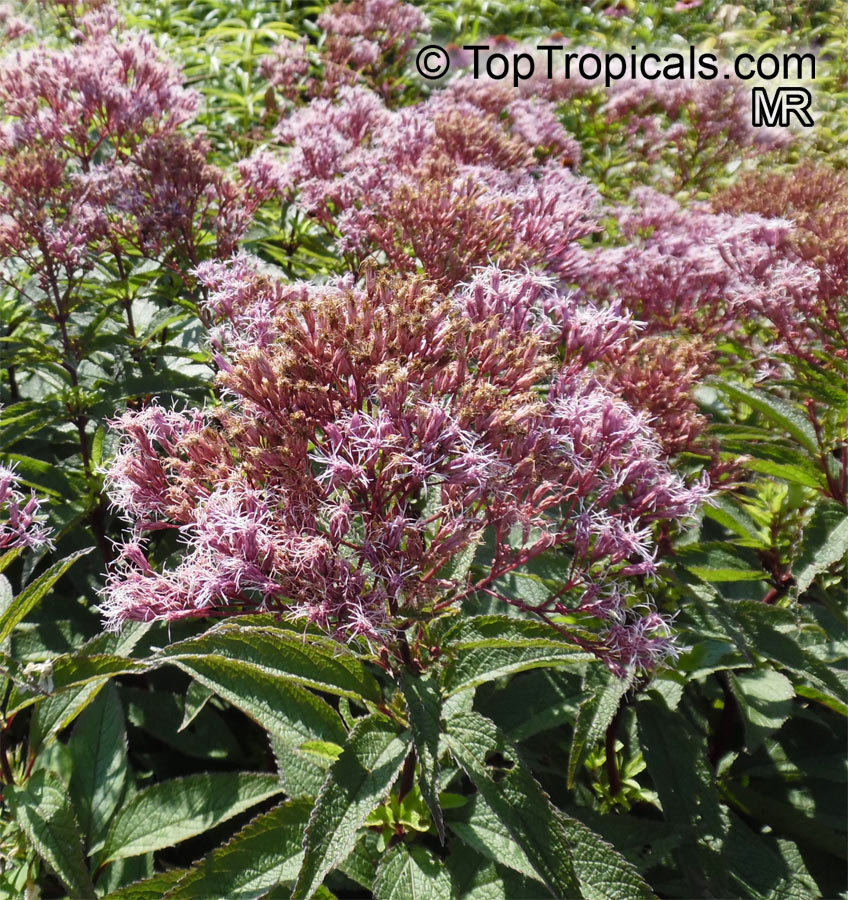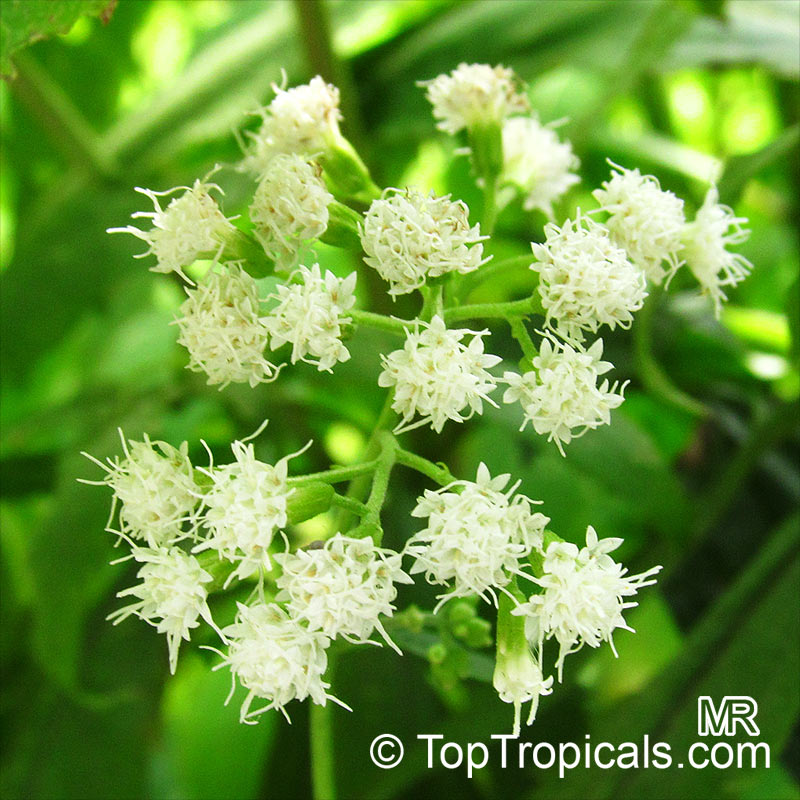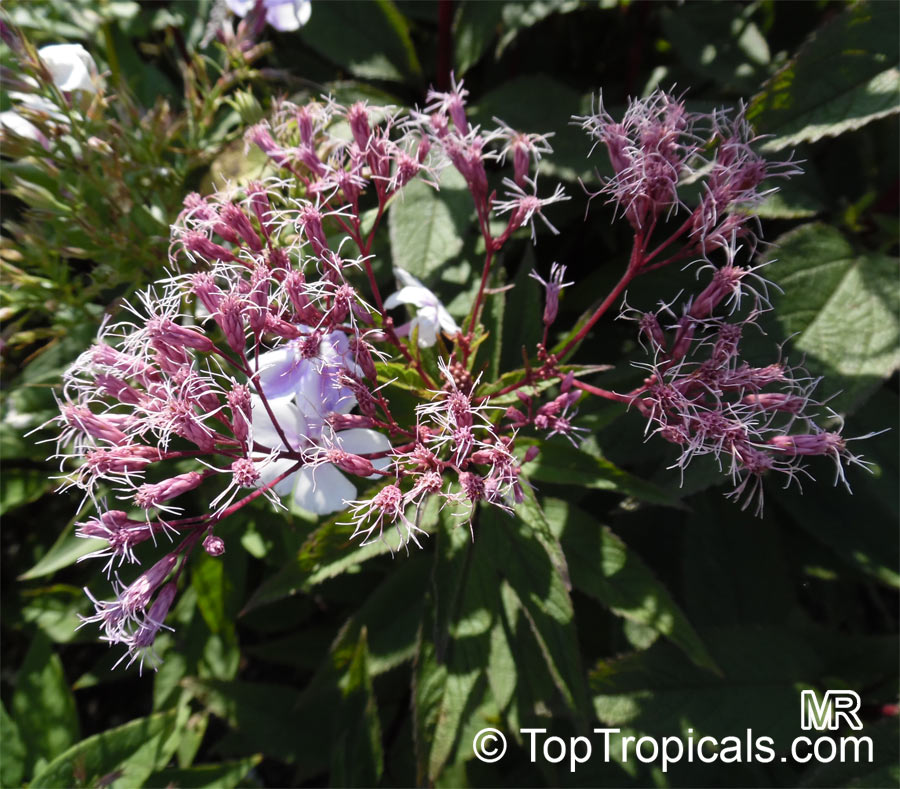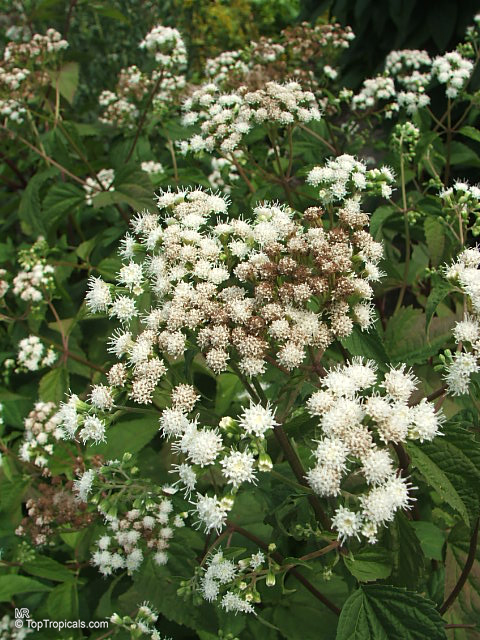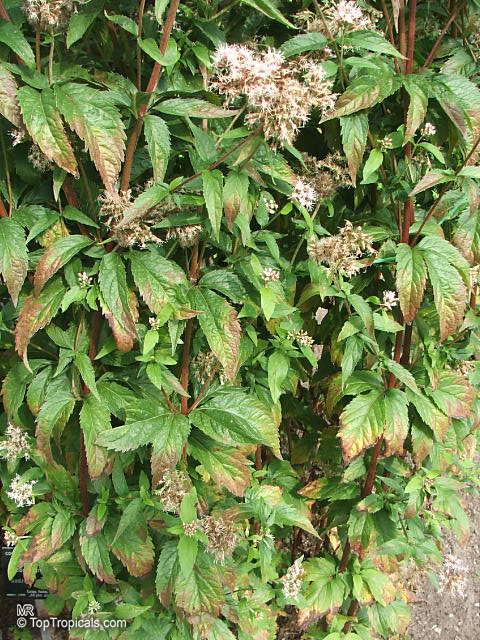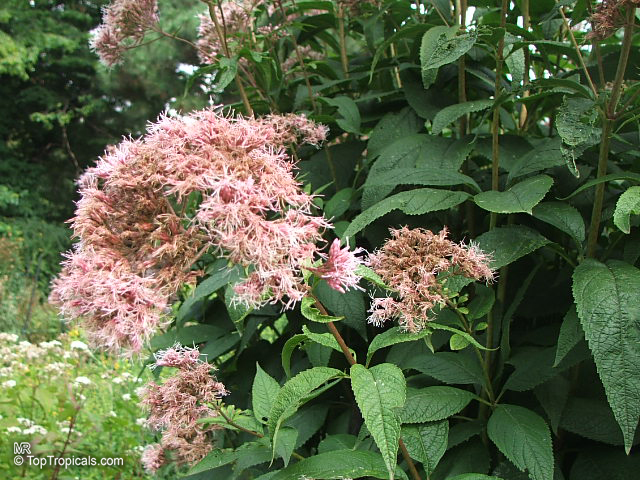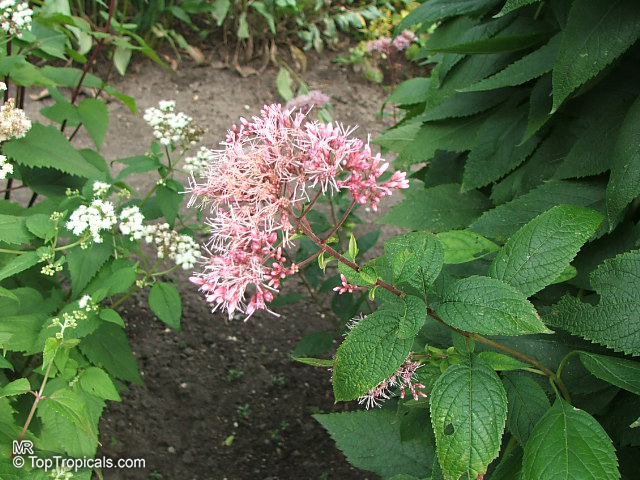Eupatorium sp. (Eupatorium)
Top Tropicals Plant Encyclopedia
Botanical name: Eupatorium sp.
Common name: Eupatorium
Family: Asteraceae
Origin: Europe, Africa, Asia and North to South America













Eupatorium is a genus of flowering plants, depending on the classification system containing from 36 to 60 species, most of which are herbaceous perennial plants growing to 0.5-3 m tall, but a few are shrubs. It is found in temperate, subtropical and tropical regions in Europe, Africa, Asia and North to South America inhabiting mainly dry, sandy sites in woodland and thickets to pasture and swamps. Only a few Eupatorium species are in cultivation, often being grown for their attractive flowerheads in various shades of white, pink, violet and purple that are also nectar rich and attractive to bees and butterflies.
Species of Eupatorium have been used in folk medicine, for instance to excrete excess uric acid which causes gout, but they also contain toxic compounds that can cause liver damage.
Eupatorium purpureum (Sweet Joe Pye Weed) - one of the most common garden grown species.
Species:
Eupatorium ageratoides
Eupatorium aromaticum
Eupatorium cannabinum
Eupatorium purpureum
